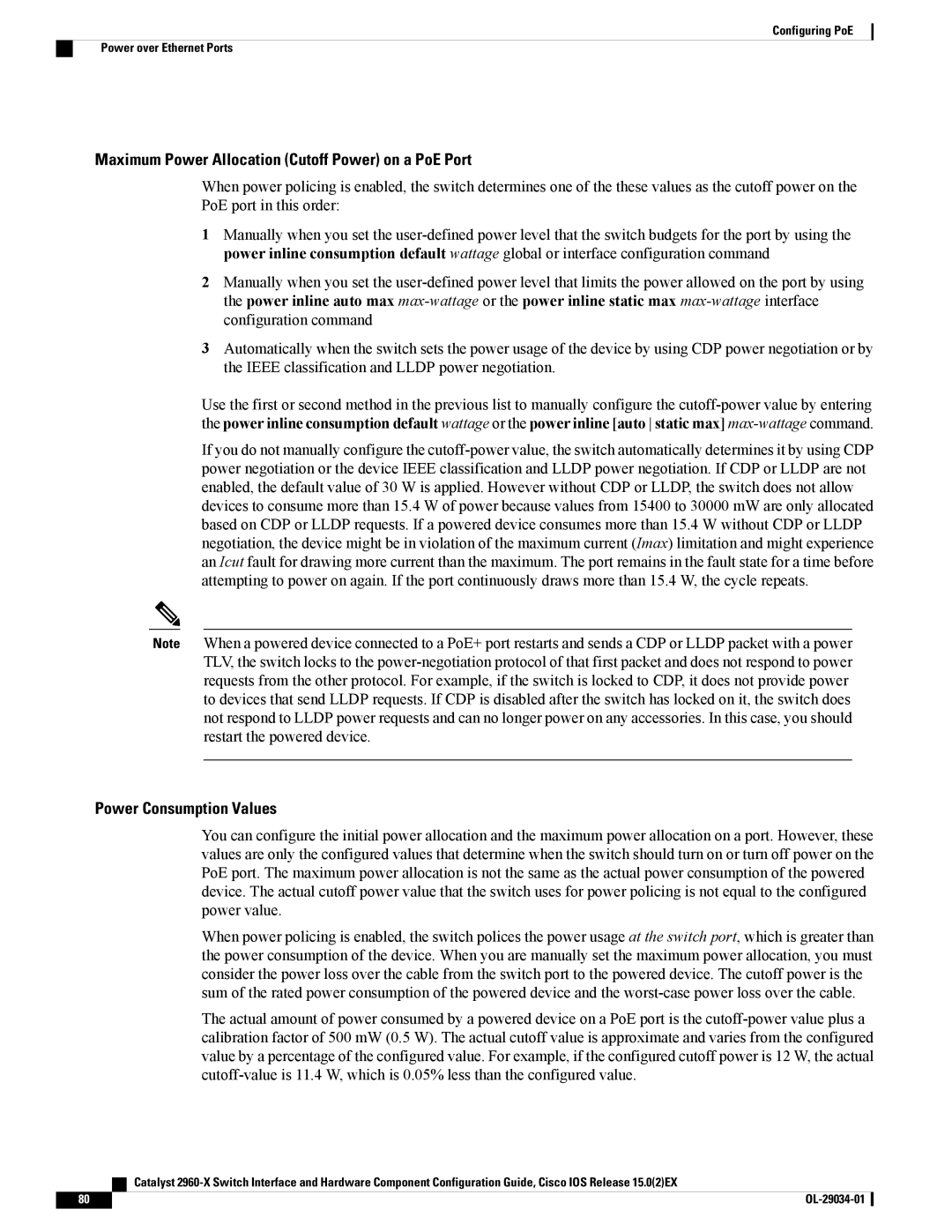
Configuring PoE
Power over Ethernet Ports
Maximum Power Allocation (Cutoff Power) on a PoE Port
When power policing is enabled, the switch determines one of the these values as the cutoff power on the PoE port in this order:
1Manually when you set the
2Manually when you set the
3Automatically when the switch sets the power usage of the device by using CDP power negotiation or by the IEEE classification and LLDP power negotiation.
Use the first or second method in the previous list to manually configure the
If you do not manually configure the
Note When a powered device connected to a PoE+ port restarts and sends a CDP or LLDP packet with a power TLV, the switch locks to the
Power Consumption Values
You can configure the initial power allocation and the maximum power allocation on a port. However, these values are only the configured values that determine when the switch should turn on or turn off power on the PoE port. The maximum power allocation is not the same as the actual power consumption of the powered device. The actual cutoff power value that the switch uses for power policing is not equal to the configured power value.
When power policing is enabled, the switch polices the power usage at the switch port, which is greater than the power consumption of the device. When you are manually set the maximum power allocation, you must consider the power loss over the cable from the switch port to the powered device. The cutoff power is the sum of the rated power consumption of the powered device and the
The actual amount of power consumed by a powered device on a PoE port is the
| Catalyst |
80 |
|
